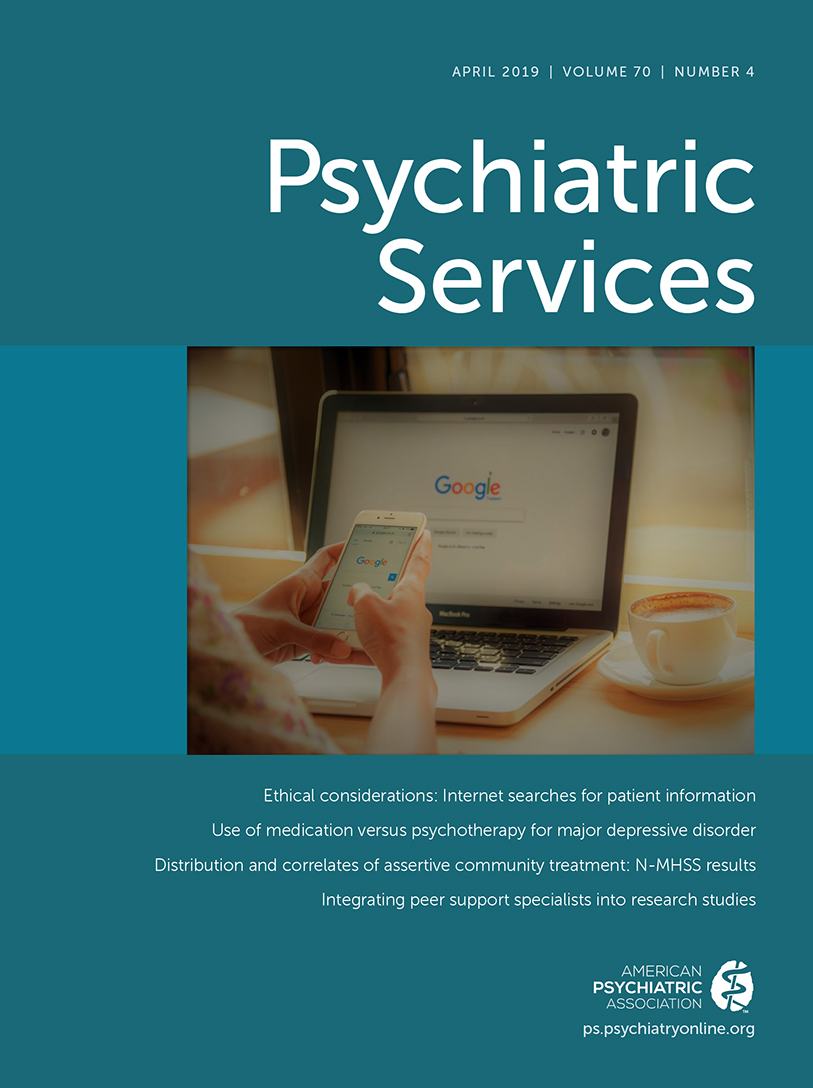A Call for Better Data to Guide ACT Policy and Programs
Four decades after its development, assertive community treatment (ACT) continues to be a critical service program within U.S. mental health systems of care. Understanding its availability is essential for adequate coverage of people with serious mental illness who need this comprehensive, high-intensity service. We commend Spivak and colleagues for casting a spotlight on the need for more—and better—ACT across the U.S. Their findings resonate with what we know to be true in our own work.
Many states are required to implement ACT as a less restrictive alternative to institutional settings, after the U.S. Department of Justice, per Olmstead v. LC, found them to be in violation of individuals’ rights. President Obama signed the 21st Century Cures Act, which prioritizes ACT within a landmark plan for mental health system reform. More recently, the Substance Abuse and Mental Health Services Administration convened two expert panels on ACT and, after a long hiatus, administered grants for ACT implementation. Clearly ACT is having a renaissance of sorts. Valid and reliable data on ACT are needed now, more than ever.
To thoughtfully expand ACT implementation, we need to establish a baseline regarding the availability of ACT teams. Perhaps as important is the quality of the ACT teams and their fidelity to the ACT model. However, the extent of high-fidelity ACT implementation nationwide remains unstudied. At minimum, researchers could ask whether ACT has been implemented and then corroborate ACT team operations. Unfortunately, the methods Spivak et al. used in their study fall somewhat short of this minimal standard.
First, the authors note that National Mental Health Services Survey (N-MHSS) completion is voluntary. N-MHSS lacks methods to validate self-reported data. Consequently, both the representativeness and accuracy of these data are in question. To illustrate, the first author (L.M.), who is knowledgeable about ACT in her home state, reviewed the 29 North Carolina facilities reporting in the 2015 N-MHSS data set that they provide ACT; 16 (55%) were facilities that do not provide ACT. Absent from the data set were an additional 62 ACT teams. Second, the authors acknowledged the methodological limitations of approximating ACT fidelity by examining whether “core services” (e.g., employment, housing, and medications) were reportedly offered by the facility. Given that the team (not the facility) is the appropriate unit of analysis and that a standard fidelity assessment involves a comprehensive on-site review of multiple data sources by objective evaluators, it is not surprising that the study’s methods resulted in some erroneous and confusing findings (e.g., lack of case management and medication management within ACT facilities).
Spivak et al. sought to understand correlates of ACT implementation. Funding sources, for example, can affect the amount of direct service time available (i.e., compared with indirect time, including billing, documentation, and service authorization requests). While debate continues on whether ACT can succeed in rural communities, success may depend on factors such as office location, workforce availability, and service catchment area containment so that ACT does not inadvertently become just an intensive case management model (e.g., a team member who happens to reside in the same county as the person served becomes the primary point of service, not the team). ACT cannot be clinically effective or cost-effective when used as a panacea for all outreach and community-based service needs; thus, examining the availability of alternative services surrounding a given ACT team is also important.
Spivak et al. have brought attention to ACT availability and to contextual factors that affect implementation. There is more work to be done to get even more reliable and valid data. The proverbial “fixing the plane while flying it” is often referred to amid efforts to simultaneously transform our mental health system while practice and policies continue as usual, or even contrary to such system transformation. Consequently, policy and program change efforts are often reactive, disjointed, and ill-informed by research. A closer examination of the extent of and fidelity to ACT implementation, the potential relationship to desired psychosocial and recovery outcomes, and the impact of contextual factors (e.g., financing, policies, and the availability of alternative outreach programs) on fidelity and sustainability are desperately needed to appropriately deploy resources in the places where ACT is needed most.



